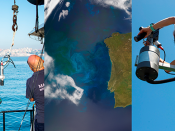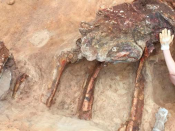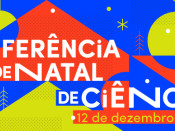Por Gonçalo Silva (IDMEC, Mechatronics Department, Univ. Évora, Portugal).
The lattice Boltzmann method (LBM) is recognised as a well-established numerical technique, capable of solving a wide variety of fluid flow problems [1]. This talk will focus on a very specific application: the LBM modeling of rotating channel flows [2]. Despite the apparent simplicity of the problem, current CFD commercial codes still show difficulties in solving it [3], and LBM is also no exception [2]. The goal of this presentation is to tackle this problem, starting from a standard LBM-BGK model [4] subject to a popular forcing scheme [5] and, taking a step-by-step analysis based on simple numerical examples, progressively reveal which difficulties the method is expected to face and which strategies can be adopted to overcome them. The points of analysis will cover almost every element of the LBM algorithm, namely:
- LBM collision model: Is a single-relaxation-time model (LBM-BGK) able to support physically consistent numerical solutions? Why a two-relaxation-time model (LBM-TRT) [6] should be seriously considered as alternative?
- LBM forcing model: Is the popular Guo et al. [5] forcing model able to reproduce consistent external forces in incompressible hydrodynamics [7]? Should we be expecting the inevitable presence of LBM force errors [8]? What are their consequences? Is there any strategy to correct/mitigate them?
- LBM lattice and equilibrium models: Do all cubic lattices (D3Q15, D3Q19 and D3Q27) perform identically, taking the same equilibrium [9]? What might explain the differences? Can we correct them by tailoring the equilibrium to the lattice [10]?
The focus of the talk will be dedicated to answering each of these questions and, at the same time, providing an improved LBM scheme, capable of competing (or even outperforming) state-of-the-art CFD second-order strategies typically used in this problem class.
References:
- [1] T. Krüger, H. Kusumaatmaja, A. Kuzmin, O. Shardt, G. Silva, E. M. Viggen, The Lattice Boltzmann Method- Principles and Practice (1st ed., Springer, 2016). (ISBN: 978-3-319-44647-9)
- [2] G. Silva, “Consistent lattice Boltzmann modeling of rotating channel flows” (Under preparation)
- [3] T. Glatzela et al., “Computational fluid dynamics (CFD) software tools for microfluidic applications – A case study,” Comput. Fluids 37, 218–235 (2008) (doi: 10.1016/j.compfluid.2007.07.014)
- [4] Y. Qian, D. d’Humi`eres, P. Lallemand, “Lattice BGK models for Navier–Stokes equation,” Europhys. Lett. 17, 479–484 (1992) (doi: 10.1209/0295-5075/17/6/001)
- [5] Z. Guo, C. Zheng, B. Shi, “Discrete lattice effects on the forcing term in the lattice Boltzmann method,” Phys. Rev. E. 65, 046308 (2002) (doi: 10.1103/PhysRevE.65.046308)
- [6] I. Ginzburg, F. Verhaeghe, D. d’Humi`eres, Two-relaxation-time lattice Boltzman scheme: about parametrization, velocity, pressure and mixed conditions, Commun. Comp. Phys. 3, 427 (2008)
- [7] G. Silva, “Discrete effects on the forcing term for the lattice Boltzmann modeling of steady hydrodynamics,” Comput. Fluids 203, 104537 (2020) (doi: 10.1016/j.compfluid.2020.104537)
- [8] Silva G., Talon L., Ginzburg I., “Low-and high-order accurate boundary conditions: From Stokes to Darcy porous flow modeled with standard and improved Brinkman lattice Boltzmann schemes,” J. Comput. Phys. 335, 50–83 (2017) (doi: 10.1016/j.jcp.2017.01.023)
- [9] G. Silva, V. Semiao, “Truncation errors and the rotational invariance of three-dimensional lattice models in the lattice Boltzmann method,” J. Comput. Phys. 269, 0021-9991 (2014) (doi: 10.1016/j.jcp.2014.03.027)
- [10] M. Bauer, G. Silva, U. R ̈ude, “Truncation errors of the D3Q19 lattice model for the lattice Boltzmann method,” J. Comput. Phys. 405, 109111 (2020) (doi: 10.1016/j.jcp.2019.109111




















